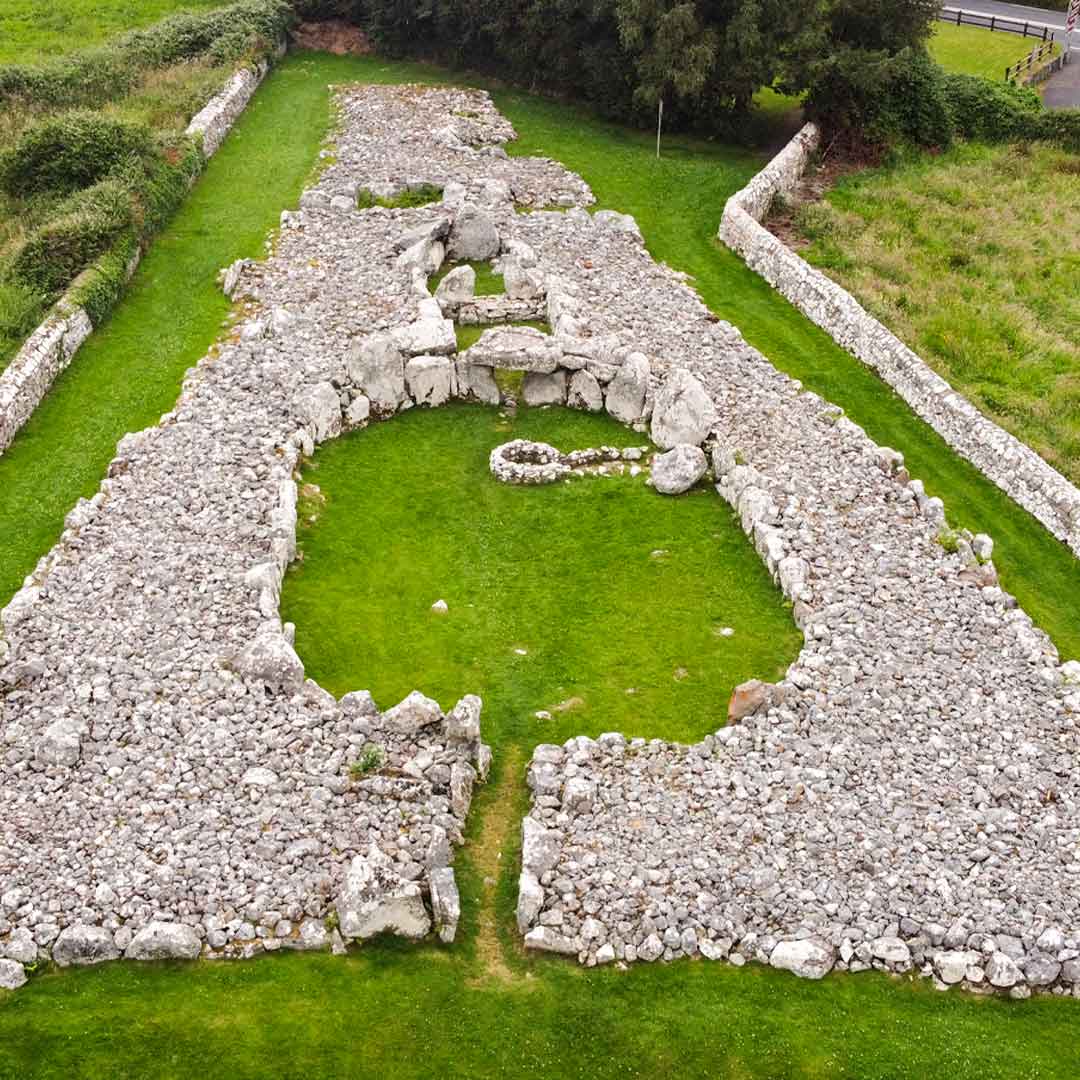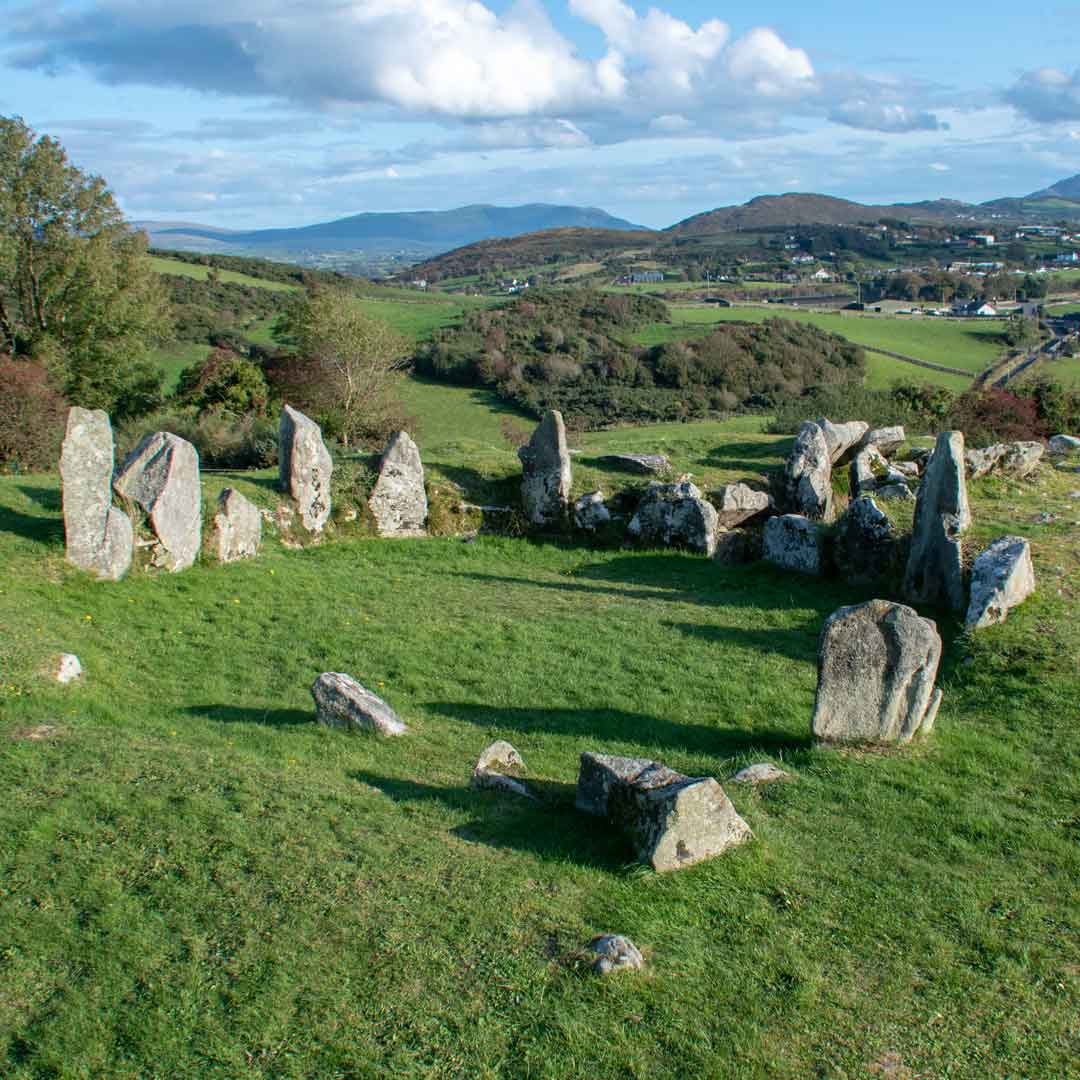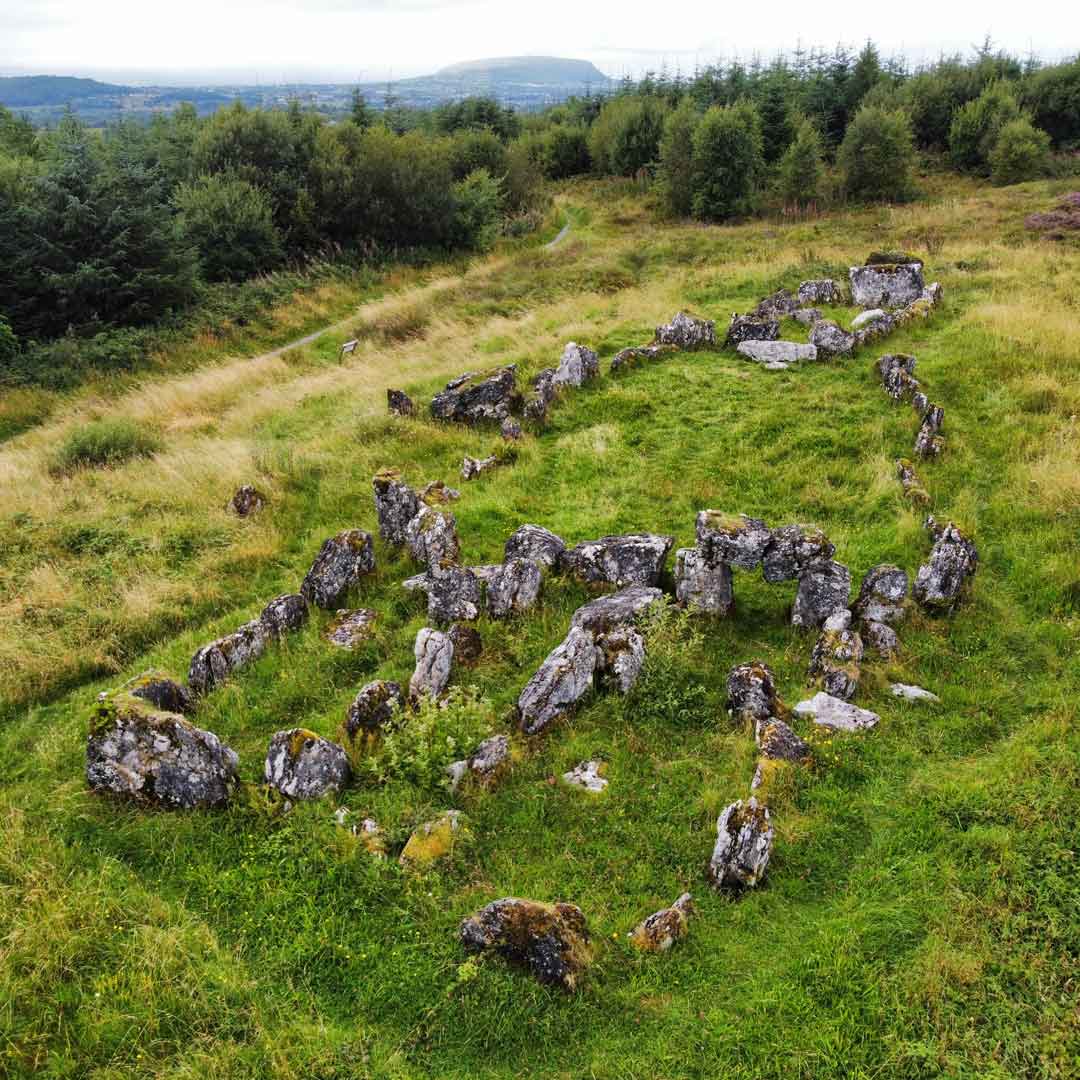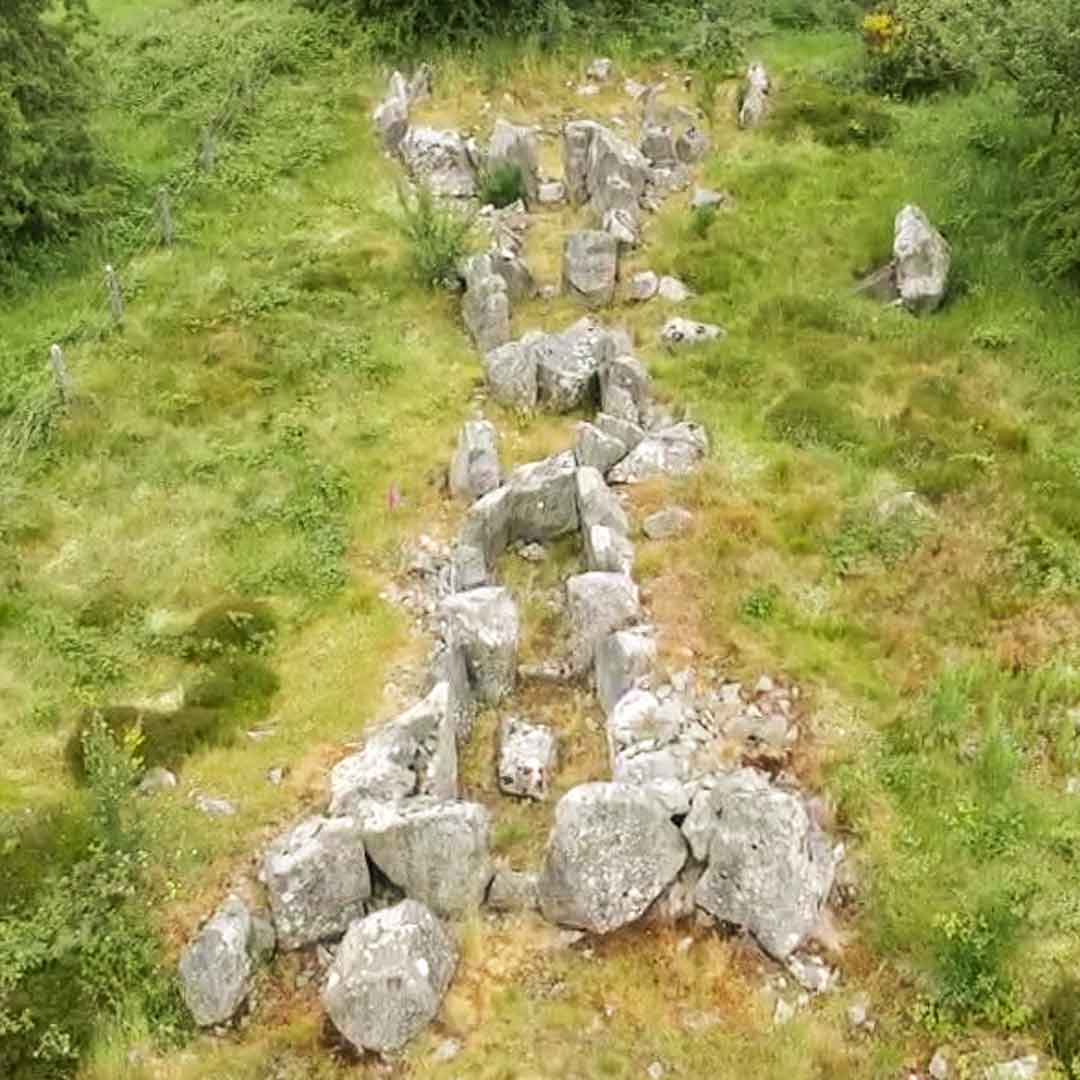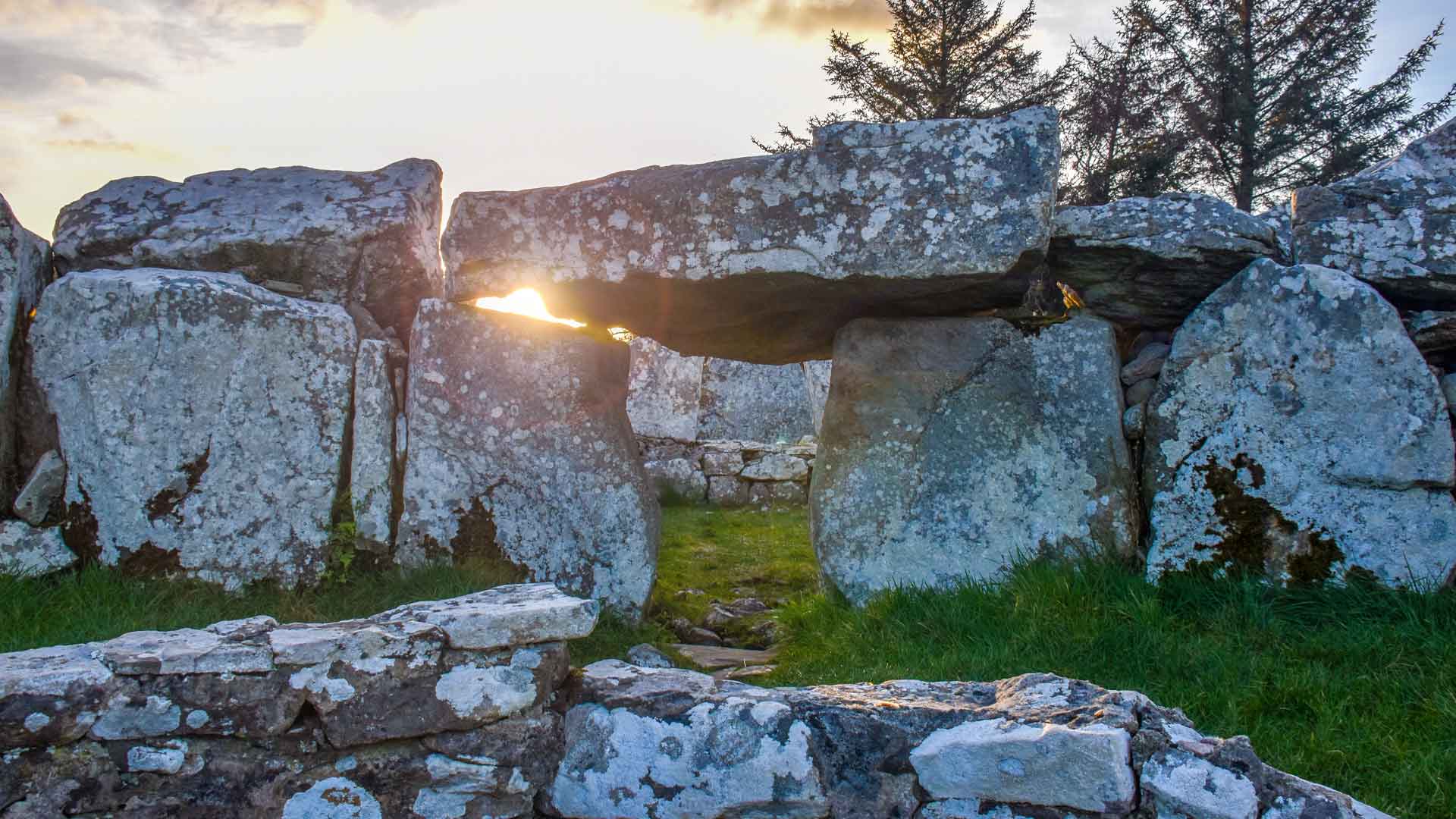
Court Tombs
Court Tombs are among the oldest of the megalithic monuments, and the first to appear in large numbers across the Irish landscape in the centuries after 3800 BCE. Their construction coincides with the arrival of farming into Ireland, which fundamentally changed how society was organised and the environments in which people lived.
The construction of Court Tombs was part of a wider phenomenon during this period, of agricultural settlement, land enclosure and monumental construction. In fact, the appearance of a Court Tomb in an area is an almost definite sign of a farming community having settled there, and the arrival of the Neolithic.
The remains of over 400 Court Tombs can be found in Ireland, occurring in mainly lowland areas across the northern half of the island. These monuments usually consist of a long cairn containing a multi-chambered internal gallery, that usually opens eastwards into a large, semi-enclosed forecourt… hence the name: Court Tombs.
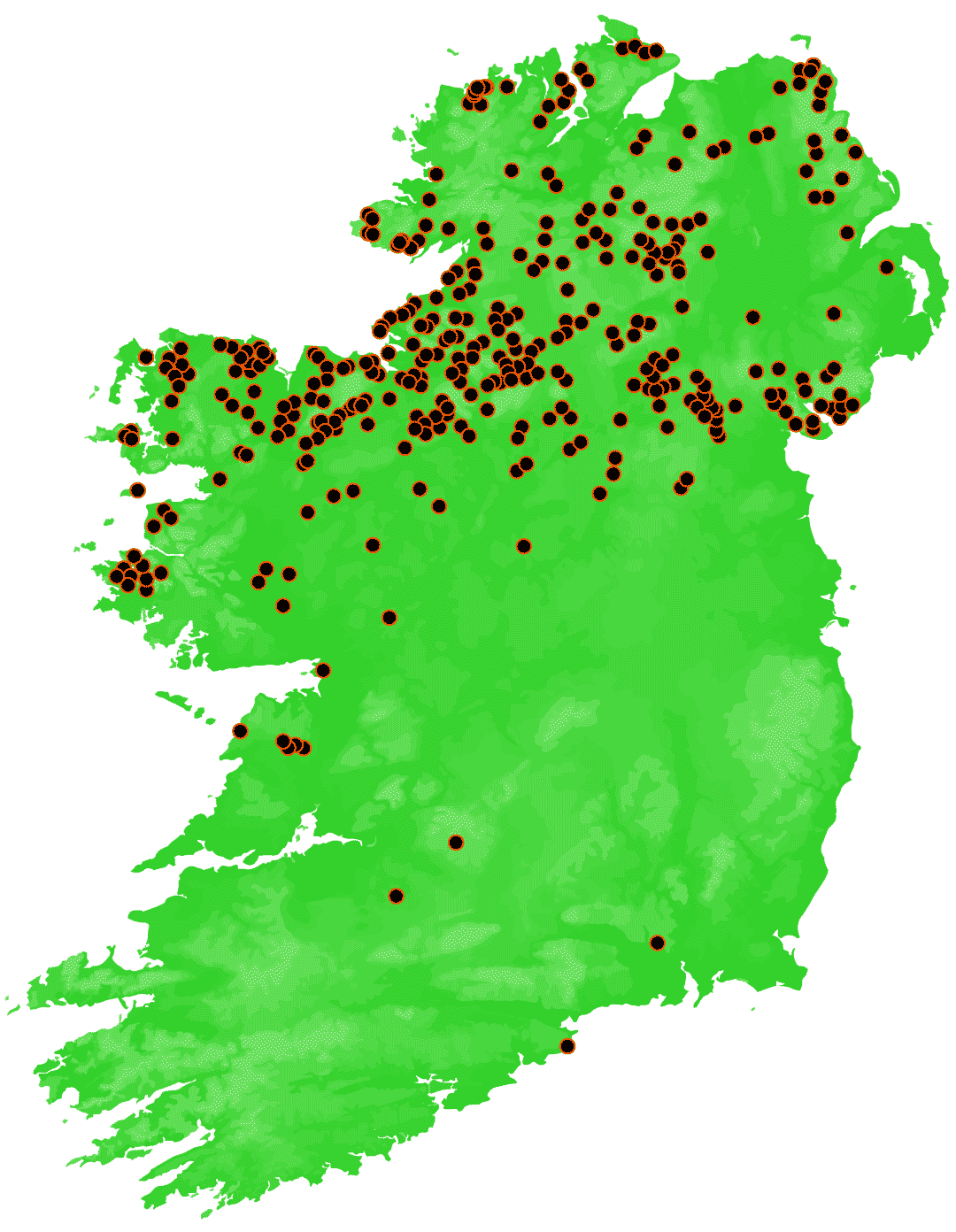
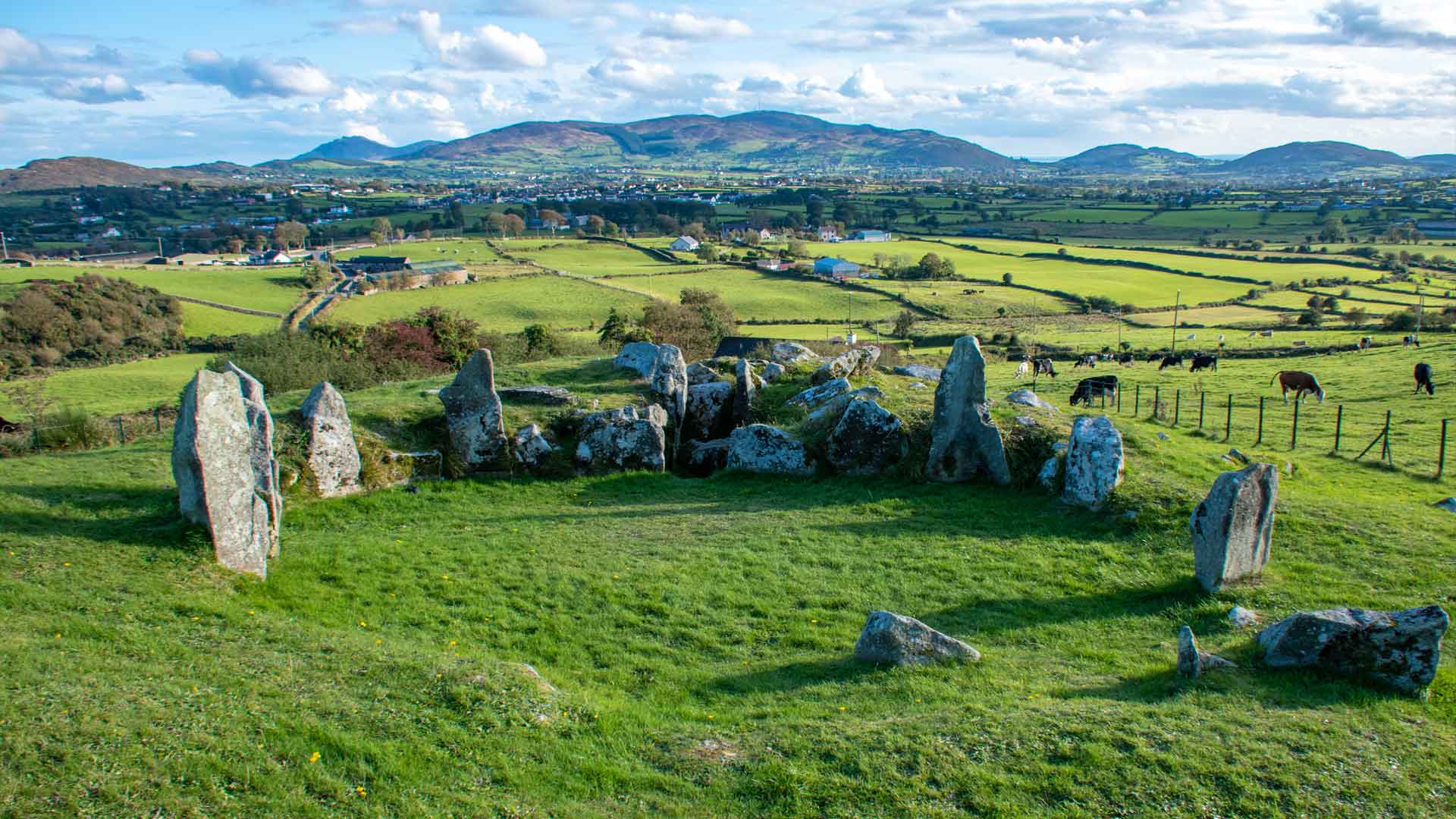
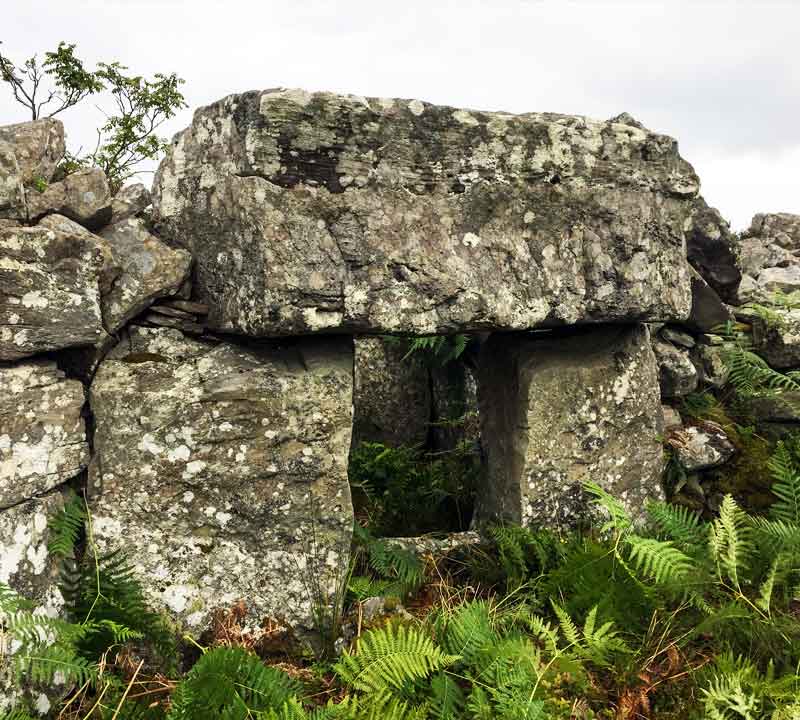
As with many of our megalithic monuments, their classification as “tombs” can be somewhat misleading. Although human remains, cremated or unburnt, have been found at most Court Tombs, we should be careful how we interpret these findings. The number of individual remains found at any of these monument is not enough to represent a whole community and they were usually interred at different times over centuries of its use.
Artefacts such as beads, pottery, flint scrapers and arrowheads often accompany the human remains, which are not always interred within the main gallery, and are sometimes found buried in the court or beneath one of the larger upright stones. It is thought that these funerary deposits may have served a ritualistic function, associated with the known neolithic practice of ancestor worship: whereby deceased members of a community seem to have played an essential role in spiritual life of the living.
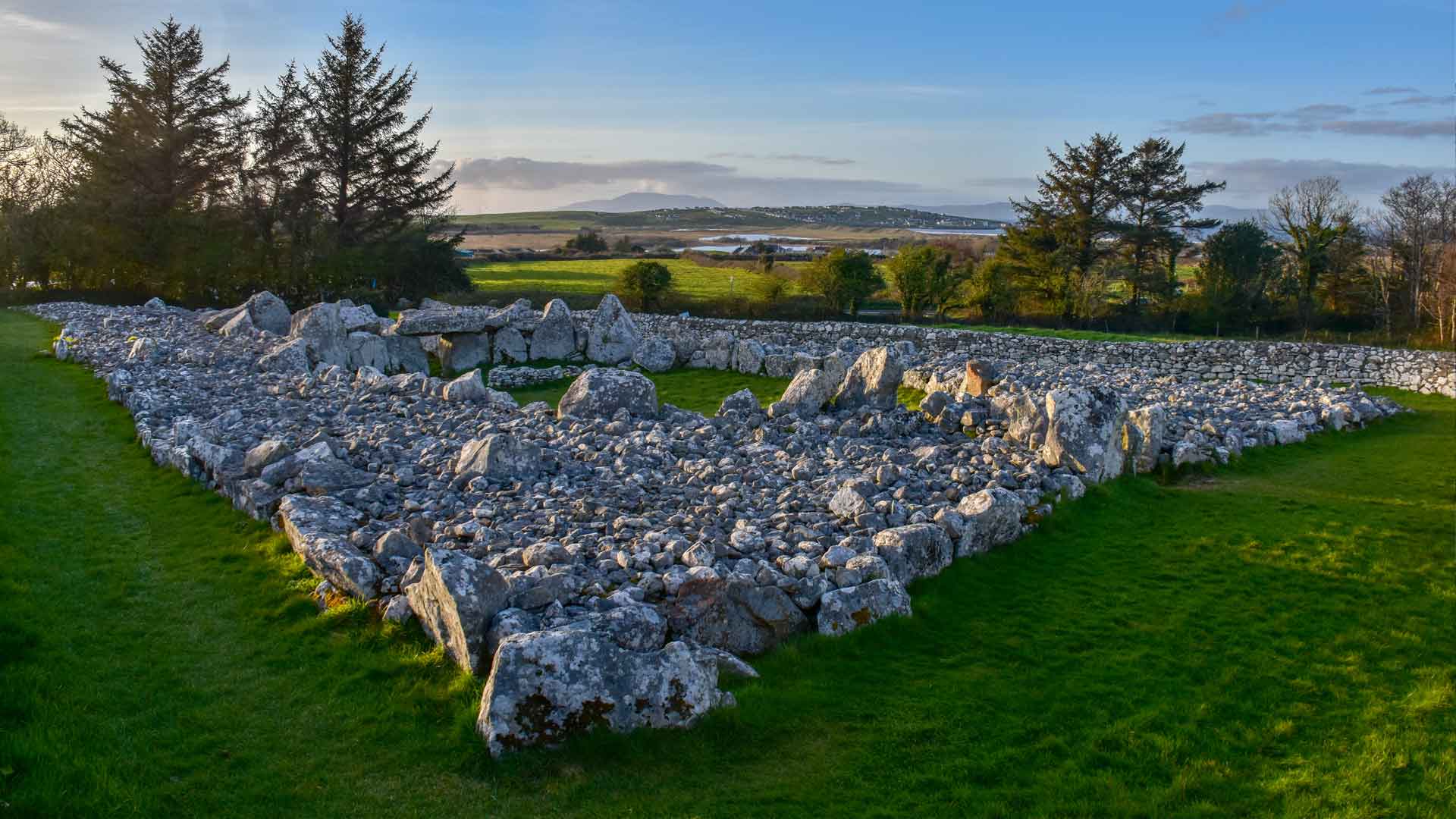
There are a few variations in the design and layout of court tombs. Most have a semi-circular court laid out in front of the covered gallery (Single Court - example, Creggandevesky, Co. Tyrone), though some courts are fully enclosed with a narrow passage for entry (Full Court - example, Creevykeel, Co. Sligo). There are also a few examples where there are covered galleries at each end of a fully enclosed court, entered by a side passage (Central Court - example, Deerpark, Co. Sligo) or a central gallery with open courts at either end (Dual Court - example, Cohaw. Co. Cavan). . . Confused? See examples below.
Many court tombs were modified after their initial construction, often with additional chambered galleries, the forecourt being extended or fully enclosed, and sometimes even another forecourt, being added.
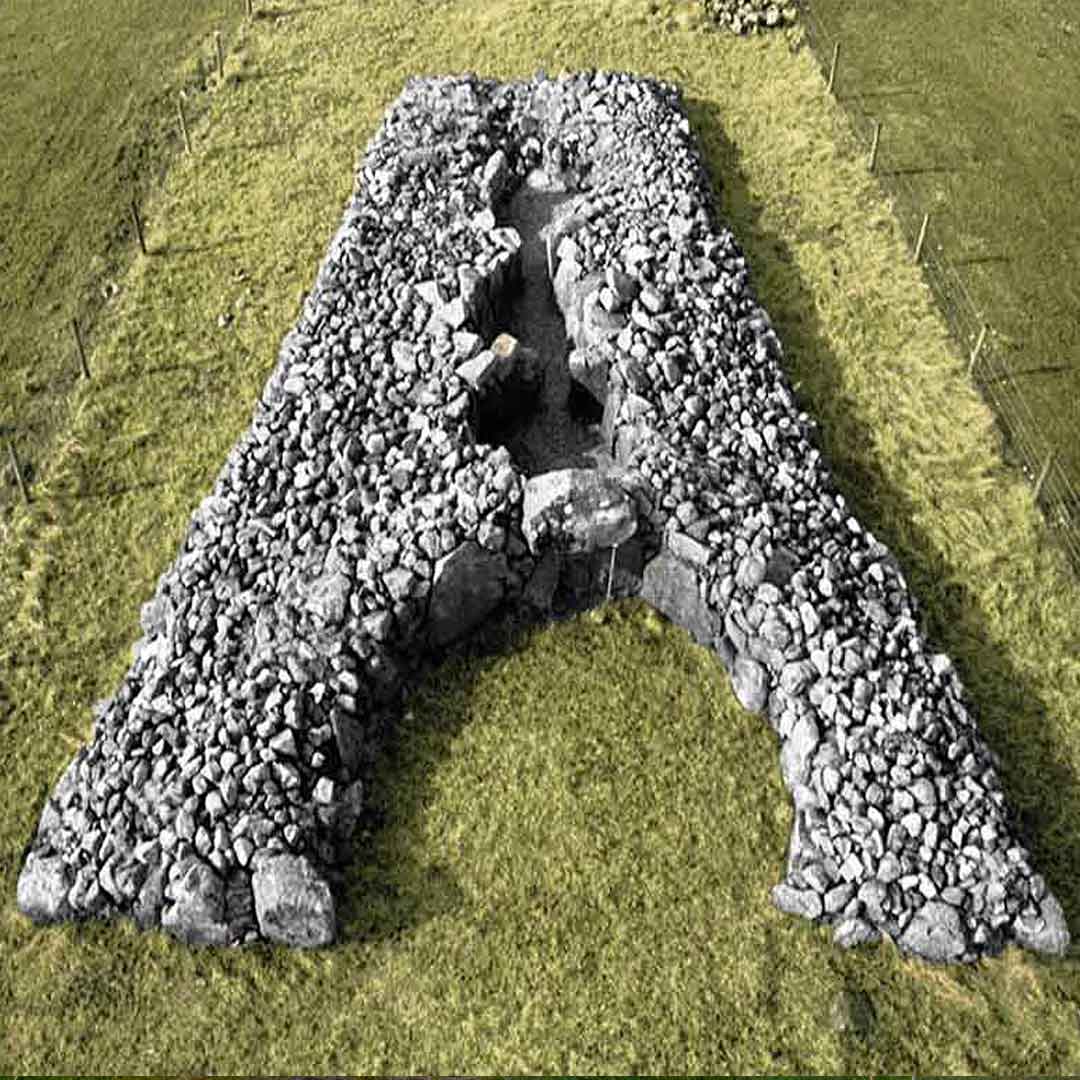
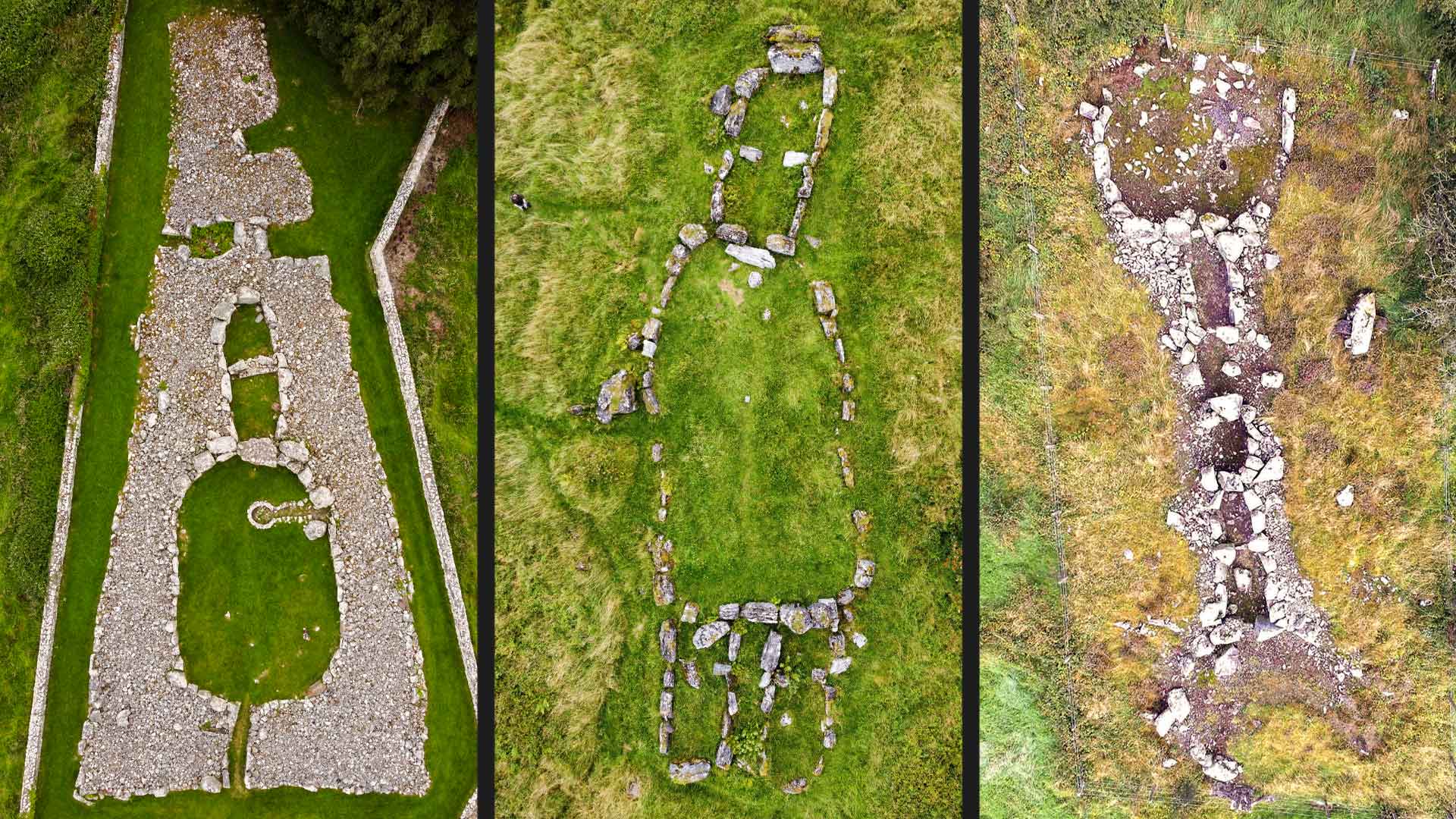
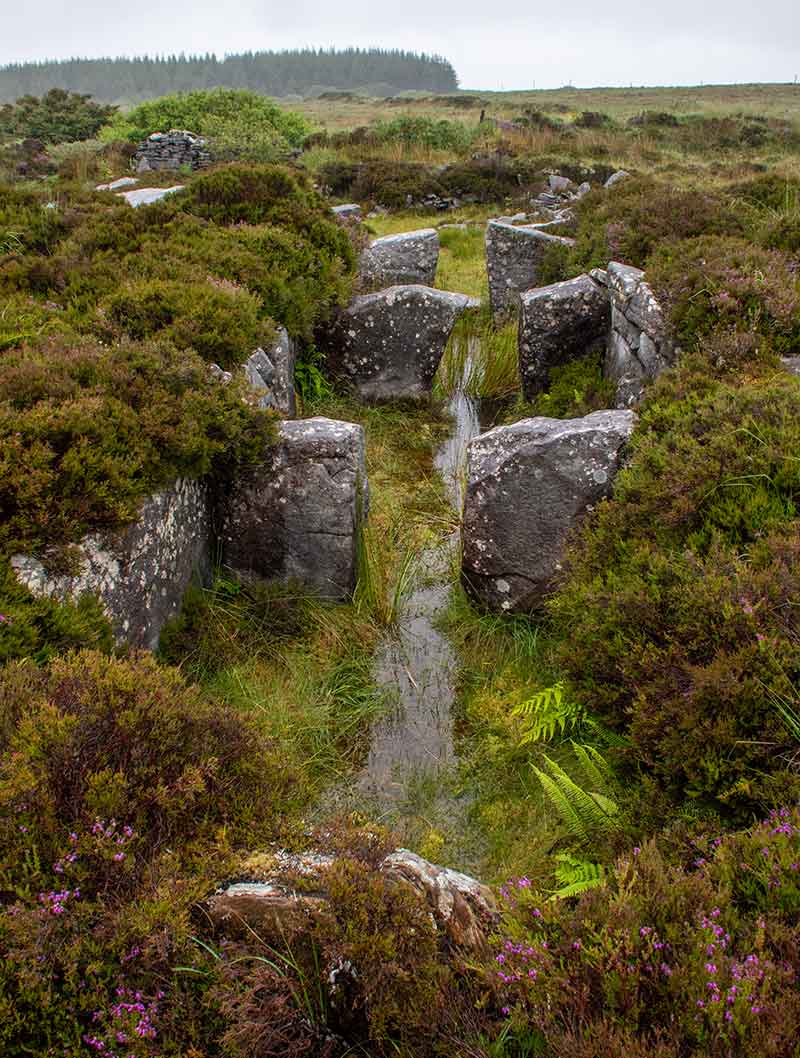
So, rather than just funerary monuments, we should think of Court Tombs as localised, multi-functional ceremonial spaces, similar to later constructions such as churches or even theatres; with the covered gallery serving as the sacred space and the open court used to accommodate the community during the ceremonies or rituals. The fact that Court Tombs, unlike other megalithic monuments, are found in close proximity to, or even within settlement sites, only emphasises their role as both civic and ritual centres for early farming communities.
However, the use of court tombs (at least for the deposition of the dead) continued only until around 3500 BC; with only a few showing evidence of sporadic use thereafter. Compared with the other neolithic monuments, this period of use (c. 350 years), is very short. The construction and use of portal and passage tombs would continue for at least another 500 years.
Neolithic population numbers in Ireland reached a peak (c.100,000 - 250,000) around 3500BCE before steadily declining thereafter. There is also evidence for a widespread decline in the intensity of land use after 3500BCE, and for the regeneration of forests in areas that had previously been cultivated. That the discontinuance of the court tomb tradition coincides with the decline in crop cultivation could indicate that their builders were primarily arable farmers as opposed to pastoralists.
Check out the examples of Court Tombs below or click here to view all
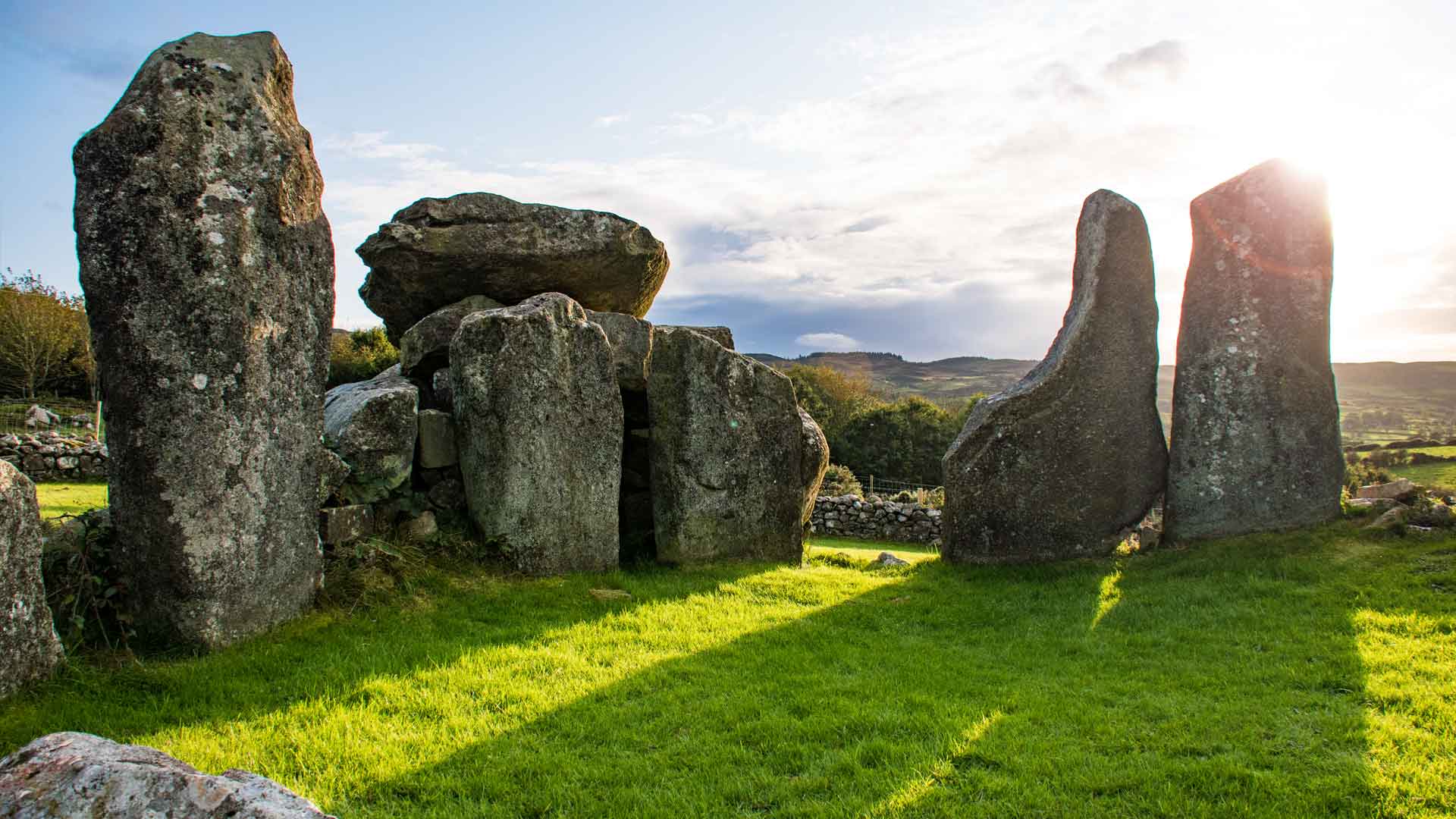
Examples of Court Tombs

Court Tombs
Court Tombs are among the oldest of the megalithic monuments, and the first to appear in large numbers across the Irish landscape in the centuries after 3800 BCE. Their construction coincides with the arrival of farming into Ireland, which fundamentally changed how society was organised and the environments in which people lived.
The construction of Court Tombs was part of a wider phenomenon during this period, of agricultural settlement, land enclosure and monumental construction. In fact, the appearance of a Court Tomb in an area is an almost definite sign of a farming community having settled there, and the arrival of the Neolithic.
The remains of over 400 Court Tombs can be found in Ireland, occurring in mainly lowland areas across the northern half of the island. These monuments usually consist of a long cairn containing a multi-chambered internal gallery, that usually opens eastwards into a large, semi-enclosed forecourt… hence the name: Court Tombs.



As with many of our megalithic monuments, their classification as “tombs” can be somewhat misleading. Although human remains, cremated or unburnt, have been found at most Court Tombs, we should be careful how we interpret these findings. The number of individual remains found at any of these monument is not enough to represent a whole community and they were usually interred at different times over centuries of its use.
Artefacts such as beads, pottery, flint scrapers and arrowheads often accompany the human remains, which are not always interred within the main gallery, and are sometimes found buried in the court or beneath one of the larger upright stones. It is thought that these funerary deposits may have served a ritualistic function, associated with the known neolithic practice of ancestor worship: whereby deceased members of a community seem to have played an essential role in spiritual life of the living.

There are a few variations in the design and layout of court tombs. Most have a semi-circular court laid out in front of the covered gallery (Single Court - example, Creggandevesky, Co. Tyrone), though some courts are fully enclosed with a narrow passage for entry (Full Court - example, Creevykeel, Co. Sligo). There are also a few examples where there are covered galleries at each end of a fully enclosed court, entered by a side passage (Central Court - example, Deerpark, Co. Sligo) or a central gallery with open courts at either end (Dual Court - example, Cohaw. Co. Cavan). . . Confused? See examples below.
Many court tombs were modified after their initial construction, often with additional chambered galleries, the forecourt being extended or fully enclosed, and sometimes even another forecourt, being added.



So, rather than just funerary monuments, we should think of Court Tombs as localised, multi-functional ceremonial spaces, similar to later constructions such as churches or even theatres; with the covered gallery serving as the sacred space and the open court used to accommodate the community during the ceremonies or rituals. The fact that Court Tombs, unlike other megalithic monuments, are found in close proximity to, or even within settlement sites, only emphasises their role as both civic and ritual centres for early farming communities.
However, the use of court tombs (at least for the deposition of the dead) continued only until around 3500 BC; with only a few showing evidence of sporadic use thereafter. Compared with the other neolithic monuments, this period of use (c. 350 years), is very short. The construction and use of portal and passage tombs would continue for at least another 500 years.
Neolithic population numbers in Ireland reached a peak (c.100,000 - 250,000) around 3500BCE before steadily declining thereafter. There is also evidence for a widespread decline in the intensity of land use after 3500BCE, and for the regeneration of forests in areas that had previously been cultivated. That the discontinuance of the court tomb tradition coincides with the decline in crop cultivation could indicate that their builders were primarily arable farmers as opposed to pastoralists.

Examples of Court Tombs

Court Tombs
Court Tombs are among the oldest of the megalithic monuments, and the first to appear in large numbers across the Irish landscape in the centuries after 3800 BCE. Their construction coincides with the arrival of farming into Ireland, which fundamentally changed how society was organised and the environments in which people lived.
The construction of Court Tombs was part of a wider phenomenon during this period, of agricultural settlement, land enclosure and monumental construction. In fact, the appearance of a Court Tomb in an area is an almost definite sign of a farming community having settled there, and the arrival of the Neolithic.
The remains of over 400 Court Tombs can be found in Ireland, occurring in mainly lowland areas across the northern half of the island. These monuments usually consist of a long cairn containing a multi-chambered internal gallery, that usually opens eastwards into a large, semi-enclosed forecourt… hence the name: Court Tombs.


As with many of our megalithic monuments, their classification as “tombs” can be somewhat misleading. Although human remains, cremated or unburnt, have been found at most Court Tombs, we should be careful how we interpret these findings. The number of individual remains found at any of these monument is not enough to represent a whole community and they were usually interred at different times over centuries of its use.
Artefacts such as beads, pottery, flint scrapers and arrowheads often accompany the human remains, which are not always interred within the main gallery, and are sometimes found buried in the court or beneath one of the larger upright stones. It is thought that these funerary deposits may have served a ritualistic function, associated with the known neolithic practice of ancestor worship: whereby deceased members of a community seem to have played an essential role in spiritual life of the living.


There are a few variations in the design and layout of court tombs. Most have a semi-circular court laid out in front of the covered gallery (Single Court - example, Creggandevesky, Co. Tyrone), though some courts are fully enclosed with a narrow passage for entry (Full Court - example, Creevykeel, Co. Sligo). There are also a few examples where there are covered galleries at each end of a fully enclosed court, entered by a side passage (Central Court - example, Deerpark, Co. Sligo) or a central gallery with open courts at either end (Dual Court - example, Cohaw. Co. Cavan). . . Confused? See examples below.
Many court tombs were modified after their initial construction, often with additional chambered galleries, the forecourt being extended or fully enclosed, and sometimes even another forecourt, being added.


So, rather than just funerary monuments, we should think of Court Tombs as localised, multi-functional ceremonial spaces, similar to later constructions such as churches or even theatres; with the covered gallery serving as the sacred space and the open court used to accommodate the community during the ceremonies or rituals. The fact that Court Tombs, unlike other megalithic monuments, are found in close proximity to, or even within settlement sites, only emphasises their role as both civic and ritual centres for early farming communities.
However, the use of court tombs (at least for the deposition of the dead) continued only until around 3500 BC; with only a few showing evidence of sporadic use thereafter. Compared with the other neolithic monuments, this period of use (c. 350 years), is very short. The construction and use of portal and passage tombs would continue for at least another 500 years.
Neolithic population numbers in Ireland reached a peak (c.100,000 - 250,000) around 3500BCE before steadily declining thereafter. There is also evidence for a widespread decline in the intensity of land use after 3500BCE, and for the regeneration of forests in areas that had previously been cultivated. That the discontinuance of the court tomb tradition coincides with the decline in crop cultivation could indicate that their builders were primarily arable farmers as opposed to pastoralists.



